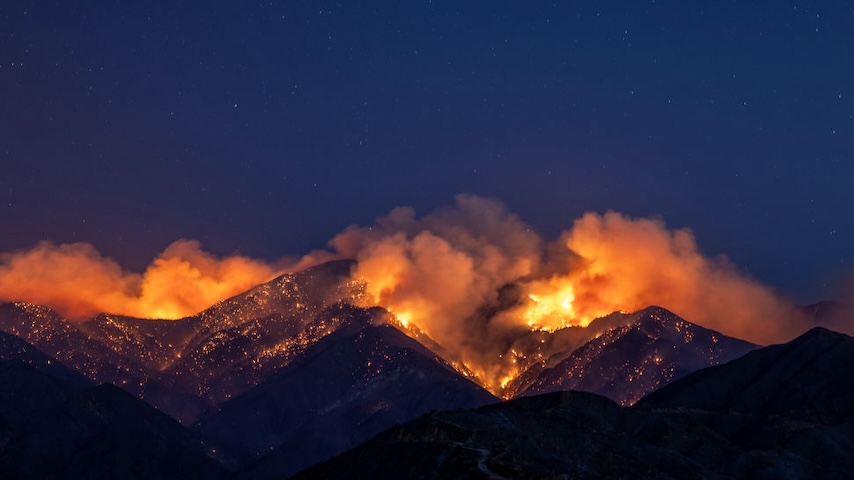Wildfires: Don’t Forget About Us
Photo by David McNew/Getty Images
The National Interagency Fire Center set the National Preparedness Level at five, its highest level, on Tuesday. This is only the second time the NPL has reached five in October, and this is the latest in the month it has happened. Hurricanes may be dominating the news, but the other climate change hazard isn’t done with us for the year either.
Too hot, too wet, too on fire.
According to the NIFC, “significant wildland fire activity continues in multiple geographic areas.” Though the agency acknowledged on Wednesday that hurricane response is justifiably sucking up much of the country’s emergency management resources these days, the “extremely anomalous fire environment” will continue in many spots through at least the middle of the month.
At the moment, there are 29 large active fires, which have collectively burned more than 1.2 million acres. Since the start of the year, the NIFC has recorded just over 40,000 wildfires — below the 10-year average — and more than 7.6 million acres up in smoke — more than one million acres above the 10-year average.
On Thursday, AirNow’s fire and smoke map shows a number of wildfires burning across Oregon, Washington, Idaho, and western Montana, with smoke plumes choking the middle part of the country and sending air quality in many places out of the green and into yellow “moderate” territory; a few spots, like, Tabiona, Utah, and Sheridan, Wyoming, are suffering through an “unhealthy” air quality day.
In Wyoming, 1,000 firefighters have been deployed to fight two separate fires. In Idaho, authorities are extending the “closed fire season” beyond its usual end date thanks to the elevated risk. A western North Dakota fire killed one person this week.
Just like hurricane season has started to eat away at the edges of its June 1 to November 30 limits, the less-well-defined “wildfire season” is champing even harder at its constraints. The risk of events like 2021’s Marshall Fire, which tore a hole in Colorado’s landscape in late December, are rising. And as these disaster seasons expand and distort as the climate warms, the potential for compound events — the fire then the flood, the two hurricanes in a week — expands as well.
Too hot, too wet, too on fire.